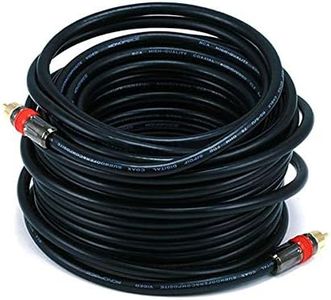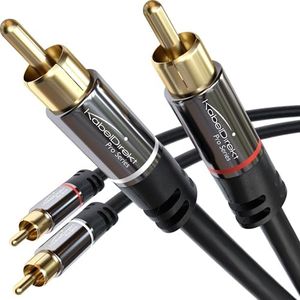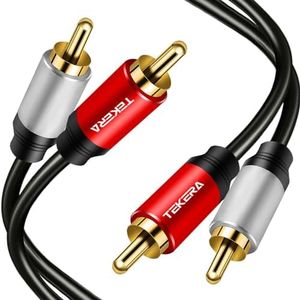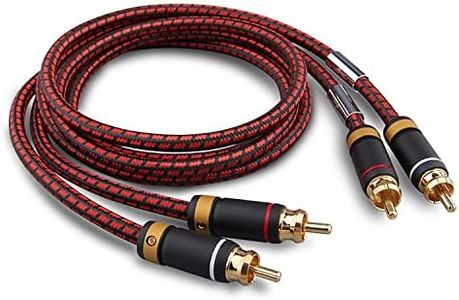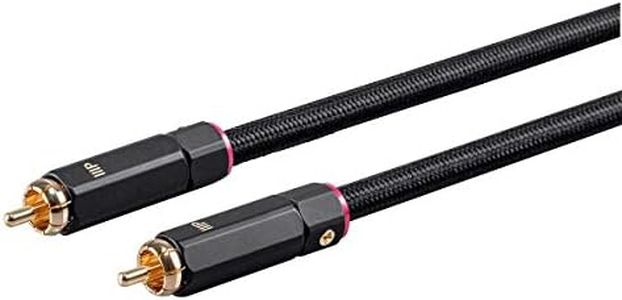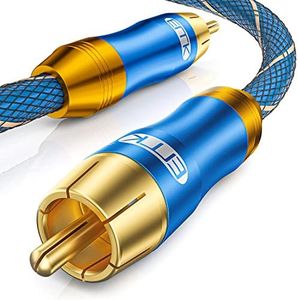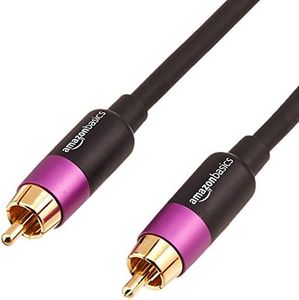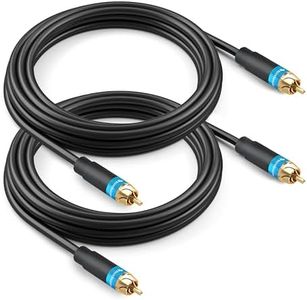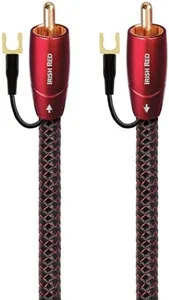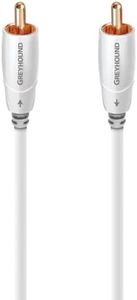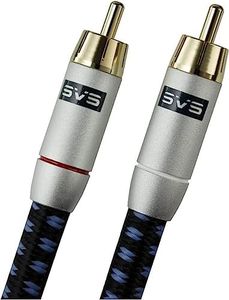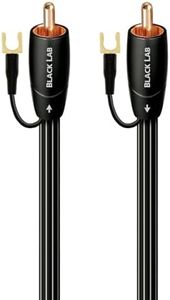We Use CookiesWe use cookies to enhance the security, performance,
functionality and for analytical and promotional activities. By continuing to browse this site you
are agreeing to our privacy policy
10 Best Subwoofer Cables
From leading brands and best sellers available on the web.Buying Guide for the Best Subwoofer Cables
Selecting the right subwoofer cable is about understanding how signal quality and durability can impact your sound experience. Subwoofer cables are used to connect your AV receiver or amplifier to your subwoofer, transmitting low-frequency audio signals. While it might seem that any cable will do, the right one can reduce unwanted noise, interference, and loss of sound quality. It's important to balance your setup needs such as room size and equipment compatibility when choosing a cable.Cable LengthCable length refers to how long the subwoofer cable is from end to end. This is important because a cable that's too short won't reach your components, while one that's too long can look messy or potentially pick up more electrical interference. Subwoofer cables are typically available in increments from a few feet up to 50 feet or more. For small rooms, shorter cables help avoid clutter. For larger rooms or when your subwoofer is farther from your amplifier, you'll need a longer cable. When choosing, measure the distance between your receiver and subwoofer, and also allow some extra length for routing around furniture or along walls.
ShieldingShielding refers to the protective layer within the cable that blocks interference from other electronic devices or power cables. This is vital for subwoofer cables as they often run alongside power cords, which can introduce humming or buzzing sounds. Types of shielding include single shielding (basic protection), double shielding (added layer), and foil or braided shielding (for high performance). If your cable runs through an environment with lots of electronics or power lines, better shielding is important. For short, isolated runs, basic shielding may be enough.
Connector QualityThe connector is the metal tip that plugs into your devices. High-quality connectors ensure a secure fit and good electrical contact, which help preserve sound quality and reduce the risk of signal loss. Gold-plated connectors are common because gold resists corrosion over time. If your subwoofer or receiver will be plugged and unplugged often, choose connectors that feel sturdy and well-made. For permanent setups, standard connectors will typically suffice as long as they offer a tight, snug fit.
Gauge (Thickness)The gauge or thickness of a subwoofer cable refers to the size of the internal conductor wire. Thicker cables (lower gauge number) offer less resistance, which can be useful over long distances, while thinner cables are fine for shorter runs. For home setups where the run is under 15-20 feet, standard gauge cables (22-24 AWG) work well. If you're going for much longer cable runs, consider lower gauge (thicker) cables to ensure the signal remains strong and clear.
Flexibility and DurabilityFlexibility means how easily the cable bends without damage, and durability refers to how well the outer jacket protects the cable over time. Flexible cables are easier to route around corners or behind furniture, which can make your setup neater. If you'll be moving your equipment often, or if the cable might get stepped on or pinched, look for cables labeled as durable or with reinforced outer jackets. For stationary installations behind the AV system, basic flexibility and protection are usually enough.


